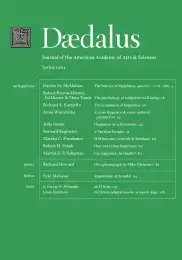A cross-linguistic & cross-cultural perspective
The psychologists David Myers and Ed Diener start their frequently cited article “Who is Happy” with the observation that “Books, books and more books have analyzed human misery. During its first century, psychology focused far more on negative emotions, such as depression and anxiety, than on positive emotions, such as happiness and satisfaction.” They note with approval that this is now changing quite dramatically.1
There is of course a good reason why books, books, and more books have been written about human misery. Misery and suffering are part and parcel of most lives, whereas happiness is not– or so it has appeared to most people at most times. In the autobiographical novel by the Egyptian-born British writer Ahdaf Soueif, the Egyptian aunt of the Westernized heroine asks her niece why she left her husband. “We were not happy together,” she replies. The aunt raises her eyebrows: “Not happy? Is this sane talk? . . . Who’s happy, child?”2 This exchange is, I think, a characteristic clash of culturally informed thought patterns, values, and expectations.
The first century of psychology, which, as Myers and Diener point out, focused to a far greater extent on negative emotions than on positive ones, was also the century of, inter alia, the two world wars, the Holocaust, the Gulag Archipelago, the millions deliberately or recklessly starved to death in the Ukraine and elsewhere under Stalin and in China under Mao Ze Dong, and the horrors of Pol Pot’s Cambodia. By the end of the twentieth century, Hitler, Stalin, Mao, and Pol Pot were all gone, but few of those who watch the evening news on television would say that the human condition has radically changed since the time of their rule. . . .
